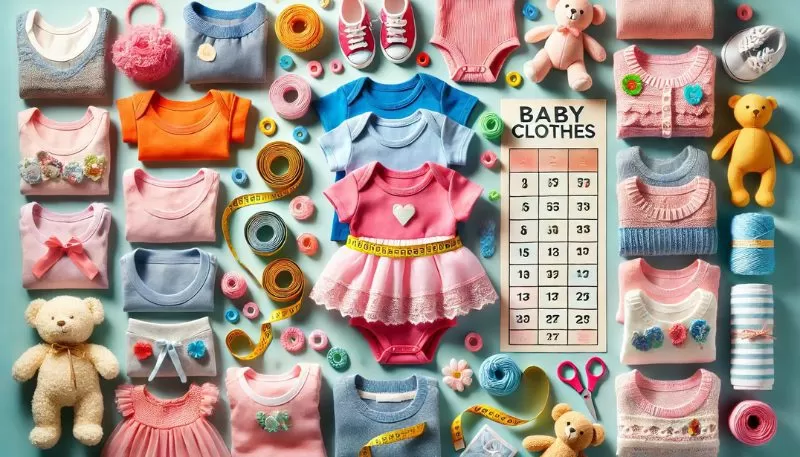Table of Contents
Right Baby Clothes Sizes
For new parents, choosing the right baby clothes size can be a bit overwhelming. Babies grow rapidly, and it can feel like the clothes you just bought no longer fit within a matter of weeks. Additionally, each brand may size its baby clothes differently, making it even more confusing. In this guide, we’ll walk you through the essentials of how to pick the right sizes, ensuring your baby stays comfortable and stylish. Along the way, we’ll recommend some helpful products from [your store] that are perfect for dressing your little one in clothes that fit well and grow with them.
When selecting baby clothes, it’s crucial to consider comfort and safety in addition to size. According to guidelines from the Virginia Cooperative Extension, understanding how to choose fabrics and read care labels can significantly impact your baby’s comfort and skin sensitivity. For a detailed guide on choosing baby clothing, including comfort factors and safety tips, visit Virginia Cooperative Extension – Planning for Baby.
Understanding Baby Clothing Sizes
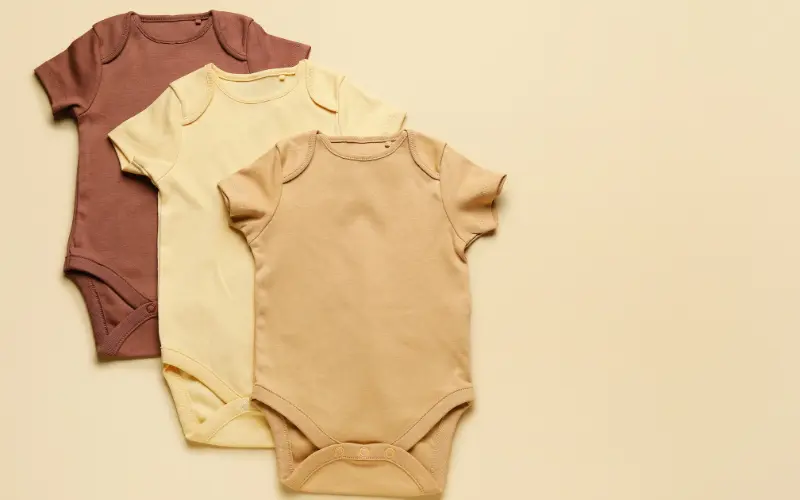
One of the most confusing aspects of shopping for baby clothes is figuring out the right size. Unlike adult clothing, baby clothes sizes are not always consistent across brands. Understanding baby clothing sizes is crucial because babies grow rapidly, and a size that fits perfectly one week might be too small the next. Baby clothing sizes are typically categorized by age, such as “0-3 months” or “6-9 months,” but the real measure you should focus on is your baby’s weight and length.
Most baby clothes come with a size label indicating the suggested age range, but babies’ sizes vary based on their growth rates. A baby who is three months old may already need clothes designed for a 6-month-old, depending on their size. When in doubt, it’s always better to size up rather than risk clothes being too tight or uncomfortable. Loose-fitting clothes give babies more room to move, and they last longer as your baby grows.
For instance, our Stretchable Baby Bodysuits are designed to accommodate your baby’s growth. These bodysuits offer comfort, flexibility, and stretch, so you don’t need to replace them as frequently. They provide plenty of room for babies to grow and move around freely, without causing discomfort.
Baby Clothes Sizes Chart and Guide
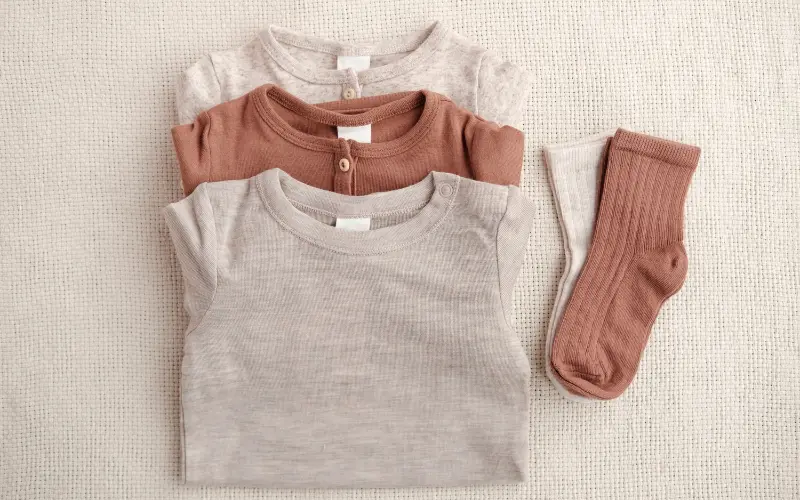
Navigating baby clothes sizes can be made easier by referring to a size chart. While each brand may have slight variations, a standard baby clothes sizes chart and guide will usually include ranges based on weight and length. Understanding these ranges will help you choose clothes that are more likely to fit your baby well.
Here’s a general guide for baby sizes:
- Newborn (NB): Up to 7 pounds
- 0-3 months: 7-12 pounds, 18-24 inches
- 3-6 months: 12-17 pounds, 24-26 inches
- 6-9 months: 17-21 pounds, 26-28 inches
- 9-12 months: 21-25 pounds, 28-30 inches
It’s also helpful to know your baby’s current weight and height before shopping for clothes. If your baby is near the upper limit of a size range, it’s usually a good idea to go for the next size up. Babies tend to have growth spurts, so having clothes that fit a bit loosely allows for more wear over time. Products like our Adjustable Baby Sleepers are ideal because they come with features that grow with your baby, eliminating the need to purchase new clothes frequently. These sleepers can be adjusted to provide a longer fit as your baby’s length and weight increase, making them a smart choice for budget-conscious parents.
The Ultimate Guide to Baby Clothes Sizes
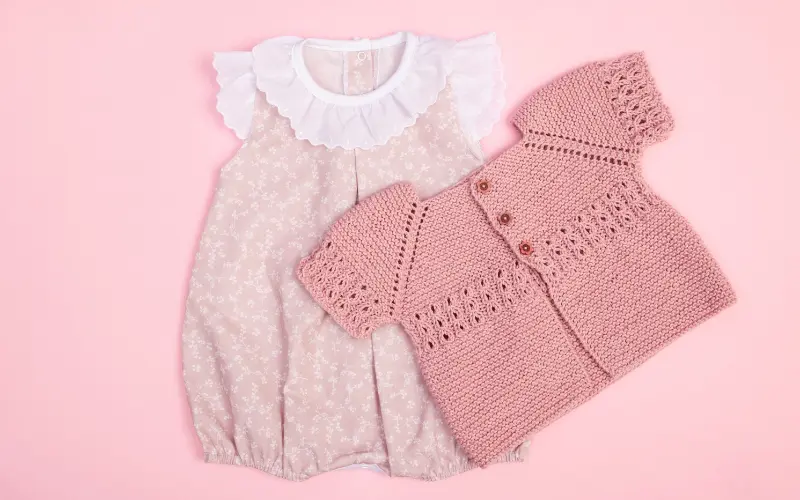
For first-time parents, having The Ultimate Guide to Baby Clothes Sizes can be invaluable. This guide will help you choose the right clothes not just for now, but for the months ahead as your baby grows. It’s essential to think ahead, especially since your baby’s size today may change rapidly in just a few weeks.
Here are some key considerations to keep in mind:
- Seasons: When selecting baby clothes, consider the season your baby will be in at different stages of their growth. For instance, if your baby is born in the summer, you’ll want to stock up on breathable onesies, but if your baby will be six months old by winter, plan ahead by purchasing warmer clothes like our Cozy Fleece Baby Jackets. Preparing for seasonal changes will help you avoid scrambling for clothes that fit your baby as the weather shifts.
- Growth spurts: Babies tend to experience growth spurts around 6 weeks, 3 months, and 6 months. Keeping larger sizes on hand will help you stay prepared without needing to rush out for new clothes every time your baby goes up a size. Growth spurts can happen suddenly, so it’s always wise to have a few outfits in the next size up ready to go.
- Special occasions: Consider having one or two outfits in the next size up for special occasions, such as holidays or family gatherings. Babies grow quickly, and the cute outfit you bought for an event may no longer fit by the time the event rolls around.
When choosing baby clothes for sensitive skin, it’s important to prioritize fabrics that are soft, breathable, and free from harsh chemicals. Natural materials like organic cotton or bamboo are excellent choices as they are gentle on delicate skin and reduce the risk of irritation. Look for labels that indicate hypoallergenic and chemical-free fabrics. Additionally, it’s essential to consider the washing process—using mild detergents without additives can help maintain the softness of the fabric and protect your baby’s skin. For more tips, check out our comprehensive guide on How to Choose Baby Clothes for Sensitive Skin
Common Sizing Mistakes to Avoid
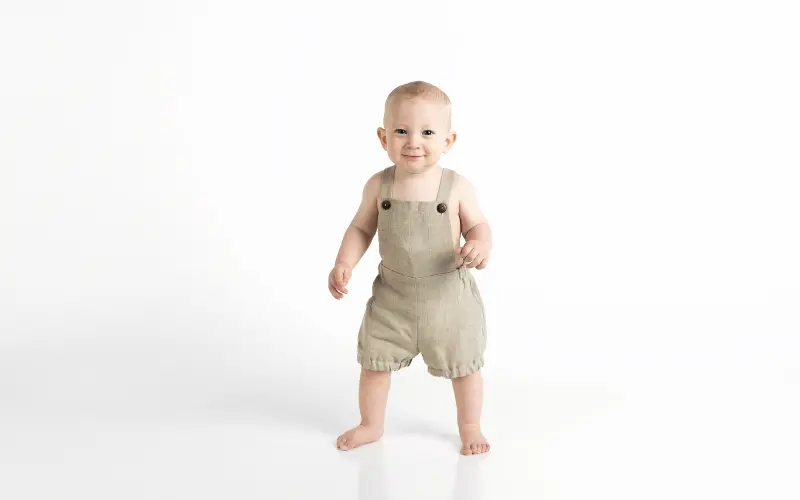
Even with a good baby clothes sizes chart and guide, many parents make mistakes when choosing sizes. These mistakes can lead to wasted money and time, as well as discomfort for your baby. Here are some common sizing mistakes to watch out for:
- Buying too many newborn clothes: Newborns grow quickly, and many babies may outgrow newborn sizes within weeks. In fact, some babies skip the newborn size entirely and go straight to 0-3 months. It’s better to focus on sizes 0-3 months or even 3-6 months, so you get more use out of the clothes. Our Soft Cotton Baby Onesies in larger sizes provide more wearability and comfort for babies who are quickly outgrowing their clothes.
- Ignoring the material: Clothes made from fabrics with little stretch may not fit as long as those with flexible material. Babies grow in all directions—length, weight, and girth—so clothes that have some give, like stretchy fabrics, are ideal for accommodating rapid growth. Our Stretchable Baby Bodysuits are perfect for this, as they allow more flexibility and comfort compared to rigid fabrics.
- Not considering ease of dressing: Babies don’t stay still during changing time, and some clothes can make the process more difficult than necessary. When buying baby clothes, consider ease of dressing as a key factor. Clothes with zippers, snaps, and stretchy necklines can make a huge difference in saving time and reducing frustration during diaper changes or outfit swaps.
Conclusion: The Importance of Choosing the Right Baby Clothes Size
When shopping for baby clothes, choosing the right size is essential for your baby’s comfort and ease. By following The Ultimate Guide to Baby Clothes Sizes, you’ll be better equipped to select clothes that fit well and last longer. Always refer to a baby clothes sizes chart and guide when in doubt, and remember the importance of understanding baby clothing sizes beyond just age. With the right tips, you can make shopping for your little one an enjoyable and stress-free experience.
Whether you’re preparing for a growth spurt or just trying to keep up with your baby’s ever-changing wardrobe needs, understanding baby clothing sizes will help you plan better, save money, and ensure your baby is comfortable in every outfit. Shop our range of stretchable, adjustable, and seasonally appropriate baby clothes at [your store] to keep your baby stylish and comfortable through every stage of their development.

